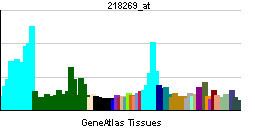Species Human Entrez 29102 | Human Mouse Ensembl ENSG00000113360 | |
 | ||
Aliases DROSHA, ETOHI2, HSA242976, RANSE3L, RN3, RNASE3L, RNASEN, drosha ribonuclease III External IDs MGI: 1261425 HomoloGene: 8293 GeneCards: DROSHA | ||
Drosha is a Class 2 ribonuclease III enzyme that in humans is encoded by the DROSHA (formerly RNASEN) gene.
Contents
Function
Members of the ribonuclease III superfamily of double-stranded (ds) RNA-specific endoribonucleases participate in diverse RNA maturation and decay pathways in eukaryotic and prokaryotic cells. The RNase III Drosha is the core nuclease that executes the initiation step of microRNA (miRNA) processing in the nucleus.
The microRNAs thus generated are short RNA molecules that regulate a wide variety of other genes by interacting with the RNA-induced silencing complex (RISC) to induce cleavage of complementary messenger RNA (mRNA) as part of the RNA interference pathway. A microRNA molecule is synthesized as a long RNA primary transcript known as a pri-miRNA, which is cleaved by Drosha to produce a characteristic stem-loop structure of about 70 base pairs long, known as a pre-miRNA. Drosha exists as part of a protein complex called the Microprocessor complex, which also contains the double-stranded RNA binding protein Pasha (also called DGCR8). Pasha is essential for Drosha activity and is capable of binding single-stranded fragments of the pri-miRNA that are required for proper processing.
Human Drosha was cloned in 2000, when it was identified as a nuclear dsRNA ribonuclease involved in the processing of ribosomal RNA precursors. The other two human enzymes that participate in the processing and activity of miRNA are the Dicer and Argonaute proteins.
Both Drosha and Pasha are localized to the cell nucleus, where processing of pri-miRNA to pre-miRNA occurs. This latter molecule is then further processed by the RNase Dicer into mature miRNAs in the cell cytoplasm. There also exists an isoform of Drosha that does not contain a nuclear localization signal, which results in the generation of c-Drosha. This variant has been shown to localize to the cell cytoplasm rather than the nucleus, but the effects on pri-miRNA processing are yet unclear.
Both Drosha and Dicer also participate in the DNA damage response.
Clinical significance
Drosha and other miRNA processing enzymes may be important in cancer prognosis. Both Drosha and Dicer can function as master regulators of miRNA processing and have been observed to be down-regulated in some types of breast cancer. The alternative splicing patterns of Drosha in The Cancer Genome Atlas have also indicated that c-drosha appears to be enriched in various types of breast cancer, colon cancer, and esophagus cancer. However, the exact nature of the association between microRNA processing and tumorigenesis is unclear.
